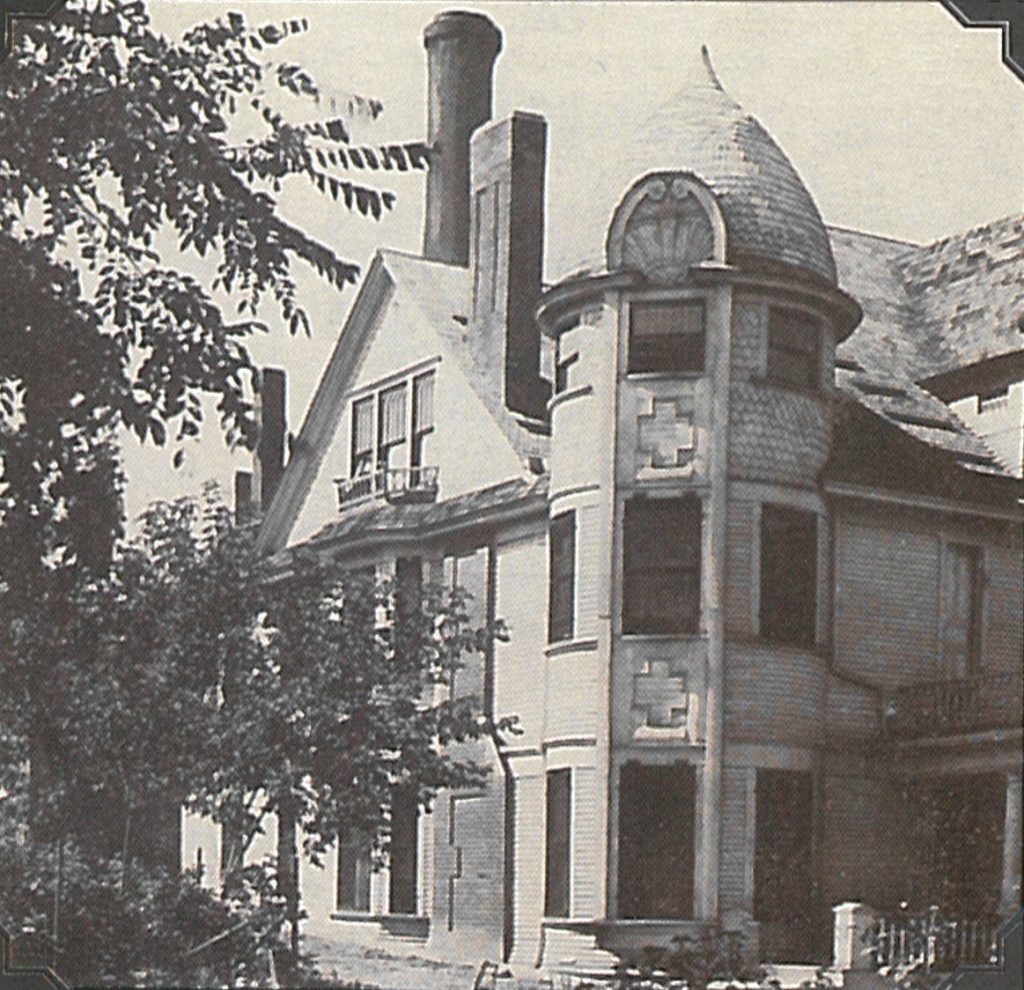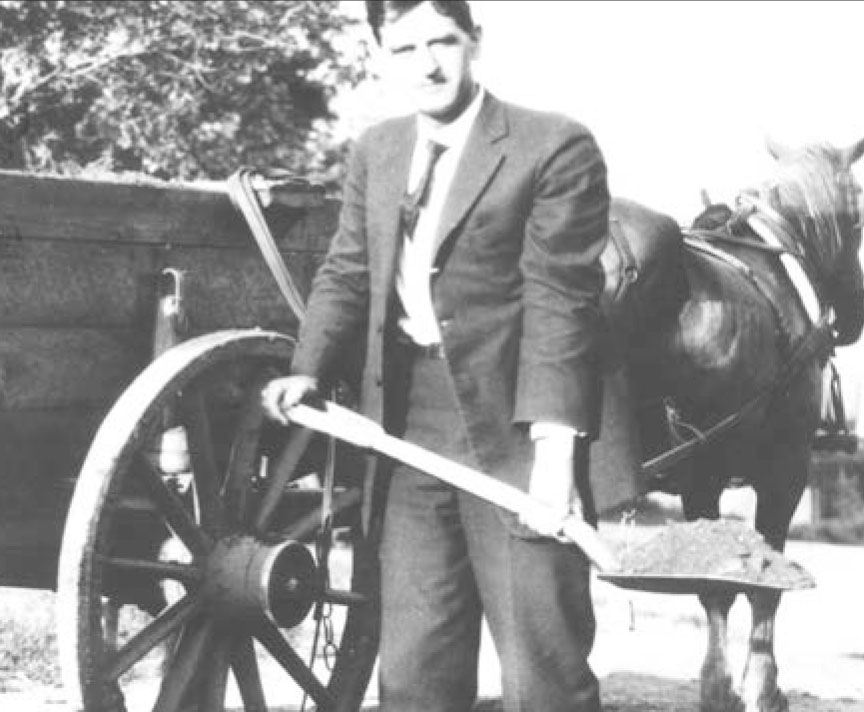
Celebrate 100 Years of Making More Possible
Trinity Health: The Beginning

1922: ‘Your attendance is urgently requested.’
It was early April 1922. A letter signed by more than a dozen Lutheran pastors was sent to congregations throughout North Dakota’s Northwest Territory. Would they consider attending a meeting in Minot to address a matter of high importance?
Rev. T.F. Gullixson, PhD, the letter’s author, wrote: “After the most careful preliminary consideration and consultation, the decision to establish a general hospital for the care of the sick and the training of nurses has been reached. A final organization meeting is set for April 25, where it is hoped to gather as many of our people as can be.”
Turnout was high. Parishioners from every corner of the region gathered at Zion Lutheran Church, where they formed the Trinity Hospital Association and launched a campaign to construct a hospital to serve the needs of the Northwest Territory and beyond. Trinity Health was founded.
Within a week, $60,000 was raised and ground was broken on a 30-bed hospital unit, the lower west wing of Trinity’s present structure.
The Man Behind the Shovel

The leading figure in planning, organizing, and building Trinity Hospital was Rev. Gullixson, pastor of Minot’s First Lutheran Church. Despite its nondenominational status today, Trinity’s early years were dominated by the Lutheran communities that emigrated to North Dakota from Scandinavia.
Gullixson was elected first president of the Board of Trustees in 1922 and remained so until he was called to be president of Luther Theological Seminary in St. Paul in 1930. A man of vision, it was Gullixson who challenged Trinity Health to commit itself to the highest standards of service.
“Cursed be who doeth the work of the Lord negligently,” he declared in his dedicatory address. “Since the days when Jesus spent so large a part of his time in works of mercy, the ministry of healing is the work of the Lord.”
At the first annual meeting May 1, 1922, the association elected 21 members to serve on the Board of Trustees and appointed officers including Rev. Gullixson, president; Rev. T.S. Stockdal, vice president; Rev. J.R. Michaelson, secretary; and E.A. Shirley, treasurer. Dr. A.O. Fonkalsrud of Mansfield General Hospital in Ohio was called to become the first superintendent and general manager. Others who were part of Trinity’s leadership during its first two decades were Otto Ellison, J.W. Samuelson, Theodore Meyer, Halvor Halvorson, Peter Fugelso, W. M. Smart, and T. Welo.
‘A Steam Engine Exploded’
Completion of the first unit took several months, but patient care began almost immediately. The C.A. Johnson house, located at the Trinity site, served as temporary quarters. By fall of 1922, Luella Riste was hired as director of nursing, and the first nursing student, Lyla Erickson of Carpio, arrived to begin training:
“It was a beautiful September day in the Fall of 1922,” Lyla recalled. “The staff consisted of only a few nurses at this time. A few patients had been admitted – some minor surgery had been done such as tonsillectomies, a couple of medical patients, and one very ill cardiac patient.”
She wrote about one afternoon when the fledging hospital was informed to get ready for an accident case involving three men. A steam engine had exploded during a grain threshing operation.
“Only one bed was available,” she recounted. “There was only one possibility and that was to set up two beds temporarily in the nurses’ dining room. One patient had been hospitalized only a few days when his condition became more critical. One evening while we were having our dinner, his sonorous respirations suddenly ceased. Our evening meal ended abruptly. Everyone did what they could, but there were no life support measures available in those days.”
Years later, Lyla would remember those early days of Trinity Hospital in the little house: “We got through the winter of 1922-23, but things were about to change. The new hospital was almost ready for occupancy. Soon the move was on. The little pioneer hospital with its few remaining patients was nearing its end. When the doors finally closed, those of us who had seen its beginning looked back with some nostalgia. Within a few weeks we were settled in our new hospital with all its modern equipment. A new era for Trinity had begun.”
Grow Faster, Please
As soon as the first unit was completed in 1923, Trinity Hospital was filled with patients. In 1924, a north wing and main entrance were added, facing what today is Burdick Expressway. That brought the total number of beds to 100, but it was still too small. In 1926, three additional stories were added to the main (north) wing, bringing capacity up to 150 beds. This too proved inadequate. Finally, in 1929, three additional stories were added to the original west wing, along with an additional operating room and a children’s department. That brought the total bed capacity to 220, completing the original four-phase construction plan that the founders envisioned. But Trinity’s growth was far from over.
A Distinguished Visitor
From the get-go, Trinity Health set a high bar for itself. Accreditation was achieved before the first unit was completed. After its opening, Trinity could describe itself as “a fully accredited, Class A Hospital, standardized under the rules and requirements of the American College of Surgeons.” It was among only 30 hospitals in the US on the honor roll of approved internship hospitals with the highest rating for performing state-of-the-art autopsies.
Trinity’s “commitment to excellence,” an early tagline of Trinity Health, didn’t go unnoticed. The March 1925 issue of The Trinity Hospital News recounted a visit by a distinguished guest:
“Dean Irons, dean of Rush Medical College in Chicago, expressed himself as ‘thunderstruck’ over the magnificence of Trinity Hospital, its layout, general plan, and suitability for hospital purposes. He said he never dreamed there were institutions of that caliber this far west.”



